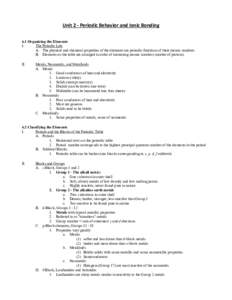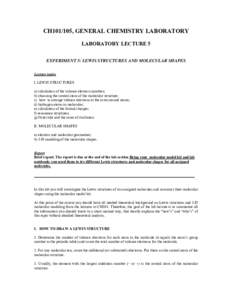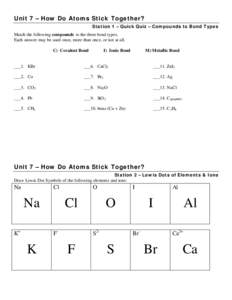 Date: 2011-05-10 22:12:46Covalent bond Lewis structure Metallic bond Ionic bond Octet rule Chemical polarity Hydrogen bond Network covalent bonding Properties of water Chemistry Chemical bonding Chemical bond | |  Unit 7 – How Do Atoms Stick Together? Station 1 – Quick Quiz – Compounds to Bond Types Match the following compounds to the three bond types. Each answer may be used once, more than once, or not at all. Unit 7 – How Do Atoms Stick Together? Station 1 – Quick Quiz – Compounds to Bond Types Match the following compounds to the three bond types. Each answer may be used once, more than once, or not at all.
Add to Reading ListSource URL: www.chemmybear.comDownload Document from Source Website File Size: 382,50 KBShare Document on Facebook
|



 Unit 7 – How Do Atoms Stick Together? Station 1 – Quick Quiz – Compounds to Bond Types Match the following compounds to the three bond types. Each answer may be used once, more than once, or not at all.
Unit 7 – How Do Atoms Stick Together? Station 1 – Quick Quiz – Compounds to Bond Types Match the following compounds to the three bond types. Each answer may be used once, more than once, or not at all.